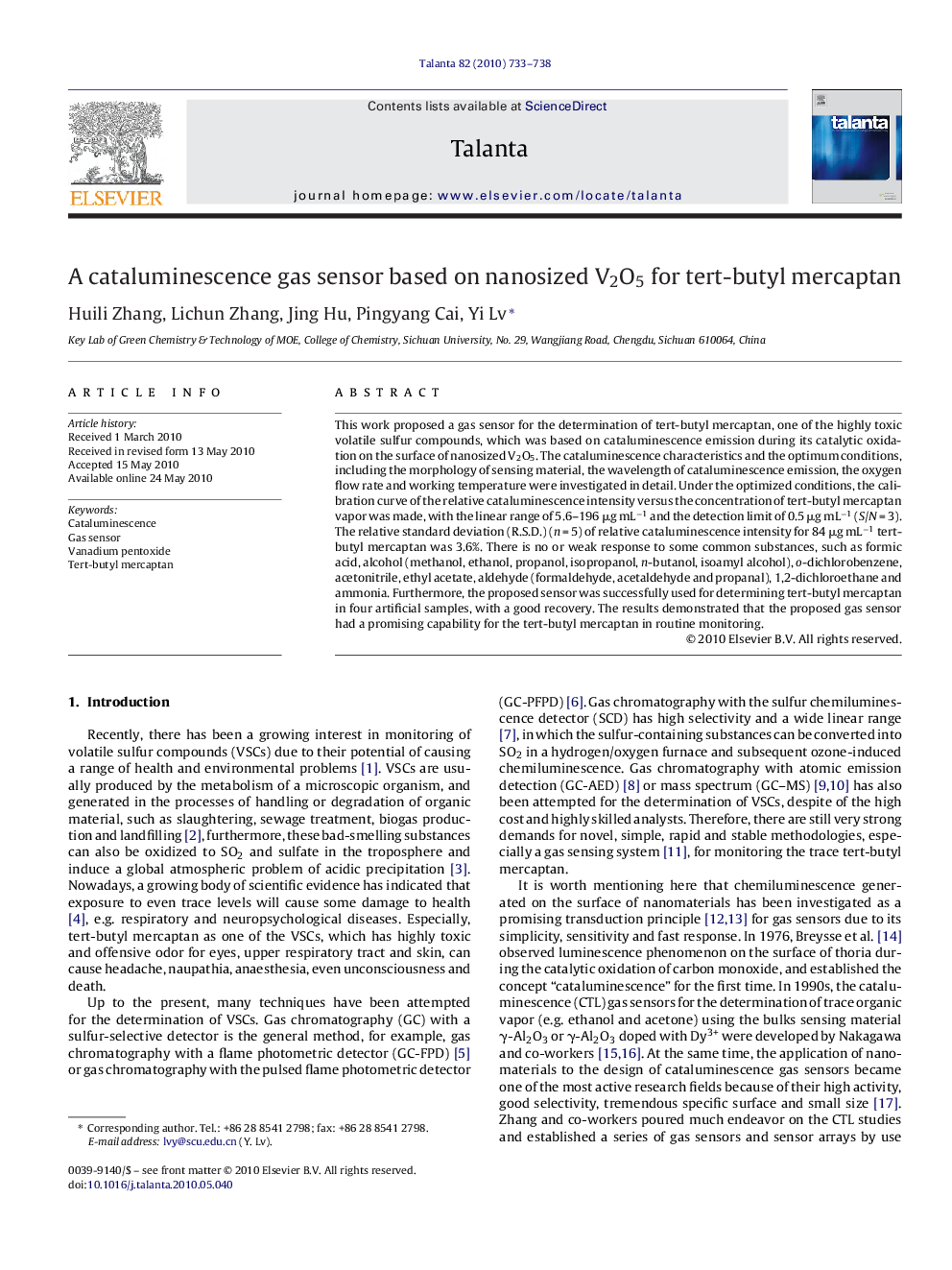| Article ID | Journal | Published Year | Pages | File Type |
|---|---|---|---|---|
| 1244712 | Talanta | 2010 | 6 Pages |
This work proposed a gas sensor for the determination of tert-butyl mercaptan, one of the highly toxic volatile sulfur compounds, which was based on cataluminescence emission during its catalytic oxidation on the surface of nanosized V2O5. The cataluminescence characteristics and the optimum conditions, including the morphology of sensing material, the wavelength of cataluminescence emission, the oxygen flow rate and working temperature were investigated in detail. Under the optimized conditions, the calibration curve of the relative cataluminescence intensity versus the concentration of tert-butyl mercaptan vapor was made, with the linear range of 5.6–196 μg mL−1 and the detection limit of 0.5 μg mL−1 (S/N = 3). The relative standard deviation (R.S.D.) (n = 5) of relative cataluminescence intensity for 84 μg mL−1 tert-butyl mercaptan was 3.6%. There is no or weak response to some common substances, such as formic acid, alcohol (methanol, ethanol, propanol, isopropanol, n-butanol, isoamyl alcohol), o-dichlorobenzene, acetonitrile, ethyl acetate, aldehyde (formaldehyde, acetaldehyde and propanal), 1,2-dichloroethane and ammonia. Furthermore, the proposed sensor was successfully used for determining tert-butyl mercaptan in four artificial samples, with a good recovery. The results demonstrated that the proposed gas sensor had a promising capability for the tert-butyl mercaptan in routine monitoring.
